Comcast 2012 Annual Report Download - page 60
Download and view the complete annual report
Please find page 60 of the 2012 Comcast annual report below. You can navigate through the pages in the report by either clicking on the pages listed below, or by using the keyword search tool below to find specific information within the annual report.-
 1
1 -
 2
2 -
 3
3 -
 4
4 -
 5
5 -
 6
6 -
 7
7 -
 8
8 -
 9
9 -
 10
10 -
 11
11 -
 12
12 -
 13
13 -
 14
14 -
 15
15 -
 16
16 -
 17
17 -
 18
18 -
 19
19 -
 20
20 -
 21
21 -
 22
22 -
 23
23 -
 24
24 -
 25
25 -
 26
26 -
 27
27 -
 28
28 -
 29
29 -
 30
30 -
 31
31 -
 32
32 -
 33
33 -
 34
34 -
 35
35 -
 36
36 -
 37
37 -
 38
38 -
 39
39 -
 40
40 -
 41
41 -
 42
42 -
 43
43 -
 44
44 -
 45
45 -
 46
46 -
 47
47 -
 48
48 -
 49
49 -
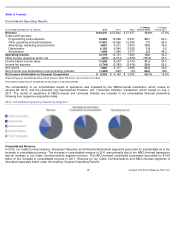 50
50 -
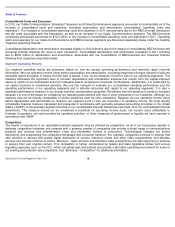 51
51 -
 52
52 -
 53
53 -
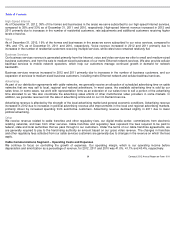 54
54 -
 55
55 -
 56
56 -
 57
57 -
 58
58 -
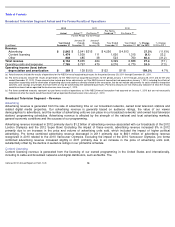 59
59 -
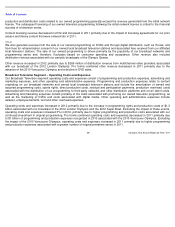 60
60 -
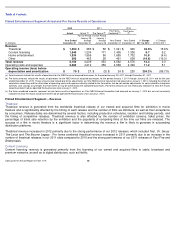 61
61 -
 62
62 -
 63
63 -
 64
64 -
 65
65 -
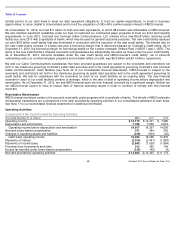 66
66 -
 67
67 -
 68
68 -
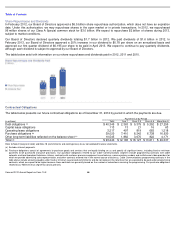 69
69 -
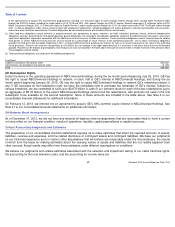 70
70 -
 71
71 -
 72
72 -
 73
73 -
 74
74 -
 75
75 -
 76
76 -
 77
77 -
 78
78 -
 79
79 -
 80
80 -
 81
81 -
 82
82 -
 83
83 -
 84
84 -
 85
85 -
 86
86 -
 87
87 -
 88
88 -
 89
89 -
 90
90 -
 91
91 -
 92
92 -
 93
93 -
 94
94 -
 95
95 -
 96
96 -
 97
97 -
 98
98 -
 99
99 -
 100
100 -
 101
101 -
 102
102 -
 103
103 -
 104
104 -
 105
105 -
 106
106 -
 107
107 -
 108
108 -
 109
109 -
 110
110 -
 111
111 -
 112
112 -
 113
113 -
 114
114 -
 115
115 -
 116
116 -
 117
117 -
 118
118 -
 119
119 -
 120
120 -
 121
121 -
 122
122 -
 123
123 -
 124
124 -
 125
125 -
 126
126 -
 127
127 -
 128
128 -
 129
129 -
 130
130 -
 131
131 -
 132
132 -
 133
133 -
 134
134 -
 135
135 -
 136
136 -
 137
137 -
 138
138 -
 139
139 -
 140
140 -
 141
141 -
 142
142 -
 143
143 -
 144
144 -
 145
145 -
 146
146 -
 147
147 -
 148
148 -
 149
149 -
 150
150 -
 151
151 -
 152
152 -
 153
153 -
 154
154 -
 155
155 -
 156
156 -
 157
157 -
 158
158 -
 159
159 -
 160
160 -
 161
161 -
 162
162 -
 163
163 -
 164
164 -
 165
165 -
 166
166 -
 167
167 -
 168
168 -
 169
169 -
 170
170 -
 171
171 -
 172
172 -
 173
173 -
 174
174 -
 175
175 -
 176
176 -
 177
177 -
 178
178 -
 179
179 -
 180
180 -
 181
181 -
 182
182 -
 183
183 -
 184
184 -
 185
185 -
 186
186 -
 187
187 -
 188
188 -
 189
189 -
 190
190 -
 191
191 -
 192
192 -
 193
193 -
 194
194 -
 195
195 -
 196
196 -
 197
197 -
 198
198 -
 199
199 -
 200
200 -
 201
201 -
 202
202 -
 203
203 -
 204
204 -
 205
205 -
 206
206 -
 207
207 -
 208
208 -
 209
209 -
 210
210 -
 211
211 -
 212
212 -
 213
213 -
 214
214 -
 215
215 -
 216
216 -
 217
217 -
 218
218 -
 219
219 -
 220
220 -
 221
221 -
 222
222 -
 223
223 -
 224
224 -
 225
225 -
 226
226 -
 227
227 -
 228
228 -
 229
229 -
 230
230 -
 231
231 -
 232
232 -
 233
233 -
 234
234 -
 235
235 -
 236
236 -
 237
237 -
 238
238 -
 239
239 -
 240
240 -
 241
241 -
 242
242 -
 243
243 -
 244
244 -
 245
245 -
 246
246 -
 247
247 -
 248
248 -
 249
249 -
 250
250 -
 251
251 -
 252
252 -
 253
253 -
 254
254 -
 255
255 -
 256
256 -
 257
257 -
 258
258 -
 259
259 -
 260
260 -
 261
261 -
 262
262 -
 263
263 -
 264
264 -
 265
265 -
 266
266 -
 267
267 -
 268
268 -
 269
269 -
 270
270 -
 271
271 -
 272
272 -
 273
273 -
 274
274 -
 275
275 -
 276
276 -
 277
277 -
 278
278 -
 279
279 -
 280
280 -
 281
281 -
 282
282 -
 283
283 -
 284
284 -
 285
285 -
 286
286 -
 287
287 -
 288
288 -
 289
289 -
 290
290 -
 291
291 -
 292
292 -
 293
293 -
 294
294 -
 295
295 -
 296
296 -
 297
297 -
 298
298 -
 299
299 -
 300
300 -
 301
301
 |
 |

Table of Contents
production and distribution costs related to our owned programming generally exceed the revenue generated from the initial network
license. The subsequent licensing of our owned television programming following the initial network license is critical to the financial
success of a television series.
Content licensing revenue decreased in 2012 and increased in 2011 primarily due to the impact of licensing agreements for our prior
season and library content that were entered into in 2011.
Other
We also generate revenue from the sale of our owned programming on DVDs and through digital distributors, such as iTunes, and
from fees for retransmission consent of our owned local broadcast television stations and associated fees received from our affiliated
local television stations. The sale of our owned programming is driven primarily by the popularity of our broadcast networks and
programming series and, therefore, fluctuates based on consumer spending and acceptance. Other revenue also includes
distribution revenue associated with our periodic broadcasts of the Olympic Games.
Other revenue increased in 2012 primarily due to $266 million of distribution revenue from multichannel video providers associated
with our broadcast of the 2012 London Olympics. Pro forma combined other revenue decreased in 2011 primarily due to the
absence of the 2010 Vancouver Olympics and a decline in DVD sales.
Broadcast Television Segment – Operating Costs and Expenses
Our Broadcast Television segment operating costs and expenses consist of programming and production expenses, advertising and
marketing expenses, and other operating and administrative expenses. Programming and production expenses relate to content
originating on our broadcast networks and owned local broadcast television stations and include the amortization of owned and
acquired programming costs, sports rights, direct production costs, residual and participation payments, production overhead, costs
associated with the distribution of our programming to third-party networks and other distribution platforms and on-
air talent costs.
Advertising and marketing expenses consist primarily of the costs associated with promoting our owned television programming, as
well as the marketing of DVDs and costs associated with digital media. Other operating and administrative expenses include
salaries, employee benefits, rent and other overhead expenses.
Operating costs and expenses increased in 2012 primarily due to the increase in programming rights and production costs of $1.3
billion associated with our broadcast of the 2012 London Olympics and the 2012 Super Bowl. Excluding the impact of these events,
operating costs and expenses increased 3% in 2012, primarily due to higher programming and production costs associated with our
continued investment in original programming. Pro forma combined operating costs and expenses decreased in 2011 primarily due
to $1 billion of programming and production expenses recognized in 2010 associated with the 2010 Vancouver Olympics. Excluding
the impact of the 2010 Vancouver Olympics, operating costs and expenses increased in 2011 primarily due to higher programming
and production expenses associated with a greater number of original primetime series in 2011.
57
Comcast 2012 Annual Report on Form 10-
K
